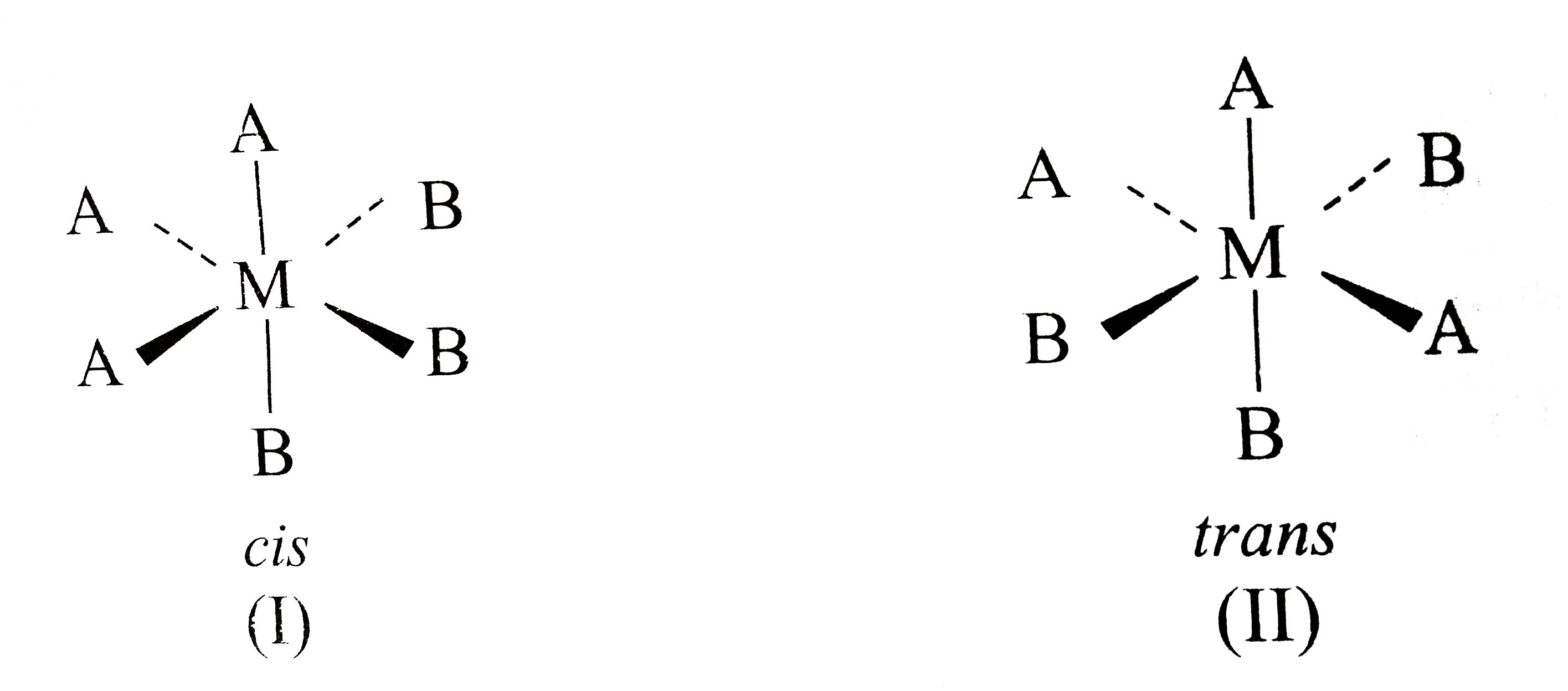InterviewSolution
Saved Bookmarks
| 1. |
Which of the following types of octahedral complexes can show mer-fac isomerism ? where M is central metal, A, B and c are different monodentate ligands while AA is a symmetrical bidentate ligand. |
|
Answer» `MA_(4)B_(2)` or `MA_(2)B_(4)`  Note that two of the A ligands occupy positions just opposite one ANOTHER. The four ligands have a SQUARE planar arrangement in which cis-trans isomers arepossible. Two diastereoisomers are also possible for an octachedral complex of the type `M(A A)_(2)B_(2)` or `M(A A)_(2)BC` as illustrated in Q.2. Octahedral complexes with the general formula `MA_(3)B_(3)` exhibit mer-fac isomerism. If we first draw an A ligand and a B ligand opposite one another in an octahedral geometry. Then the other ligands can have cis or trans arrangements on the plane perpendicular toi the axis of the first A and B ligands:  Isomer (I) show above has the three A ligands in adjacent positions (`90^(@)` separation) on one triangular face of the octahedron (fac-isomer), isomer (II) has all three A ligands in a plane that contains the M (mer-isomer). In isomer (I), all three B-M-B bonds angles are `90^(@)` whereas in isomer (II) two B-M-B angles are `90^(@)` and the third is `180^(@)`. To CONVINCE ourselves that only two diasterosiomers of `MA_(3)B_(3)` exist, look back at the cis-and trans- `[MA_(4)B_(2)]` and consoider the products obtained form them when one of the four A ligands in cis-isomer is REPLACED by a B. There are two kinds of A-ligands in the cis-isomer: two A ligands that are trans to each other and two A ligands that are trans to a B ligands. Replacing an A trans to another A with B gives `[MA_(3)B_(3)]` isomer (I), whereas replacing an A trans to a B with another B gives isomer (II)  All four A ligands in trans - `[MA_(4)B_(2)]` are equivalent, and replacing any one of them with a B gives isomer (II).  If we rotate the resulting `[MA_(3)B_(3)]` complex, we can see that it is identical to the previous DRAWING of isomer (II). Thus, there are only two diasteroisomers for a complex of the type `[MA_(3)B_(3)]` . Octahedral complexes of the type `[MA_(6)]` or `[MA_(5)B]` would not show geometrical isomerism. |
|